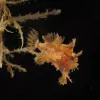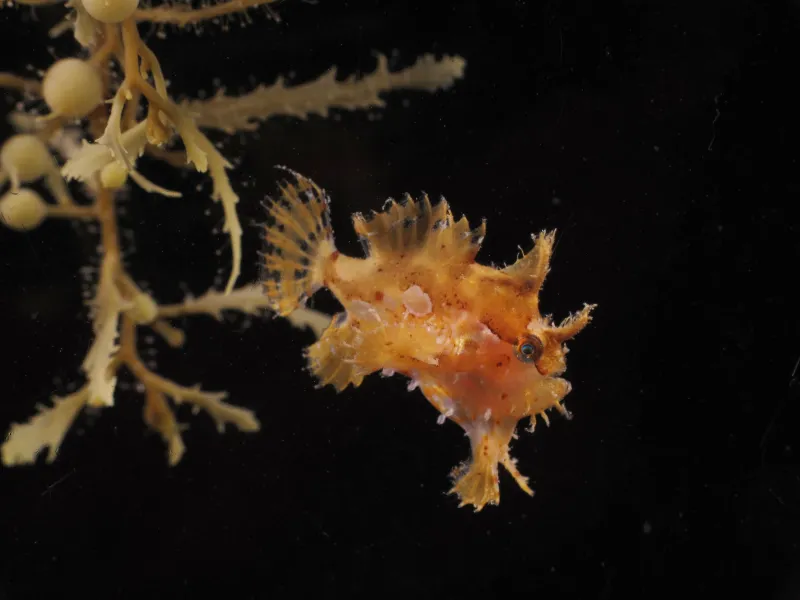One of the most common inhabitants of the sargassum community, the shrimp Latreutes fucorum (Hippolytidae) is perfectly colored to hide on the leaf-like blades.
Off the coast of Belize, Smithsonian Marine Science Network postdoctoral fellow, Seabird McKeon, studies floating seaweeds and the minuscule animals that call them home. Check out his slide show and blog and be amazed by the vast array of tiny life forms floating in the world adrift.



















